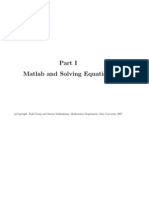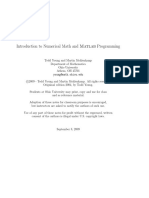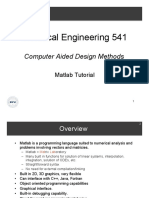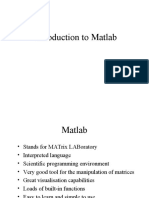0% found this document useful (0 votes)
33 views33 pagesMatlab 3
This document provides an overview of function files and graphs in MATLAB. It discusses how to create script and function files, set breakpoints, call user defined functions, overload functions, save data, prompt for user input, use control statements, and plot graphs with multiple curves and in multiple windows. Multidimensional functions and mesh plots are also introduced.
Uploaded by
joe.rahi01Copyright
© © All Rights Reserved
We take content rights seriously. If you suspect this is your content, claim it here.
Available Formats
Download as PDF, TXT or read online on Scribd
0% found this document useful (0 votes)
33 views33 pagesMatlab 3
This document provides an overview of function files and graphs in MATLAB. It discusses how to create script and function files, set breakpoints, call user defined functions, overload functions, save data, prompt for user input, use control statements, and plot graphs with multiple curves and in multiple windows. Multidimensional functions and mesh plots are also introduced.
Uploaded by
joe.rahi01Copyright
© © All Rights Reserved
We take content rights seriously. If you suspect this is your content, claim it here.
Available Formats
Download as PDF, TXT or read online on Scribd
/ 33
























































